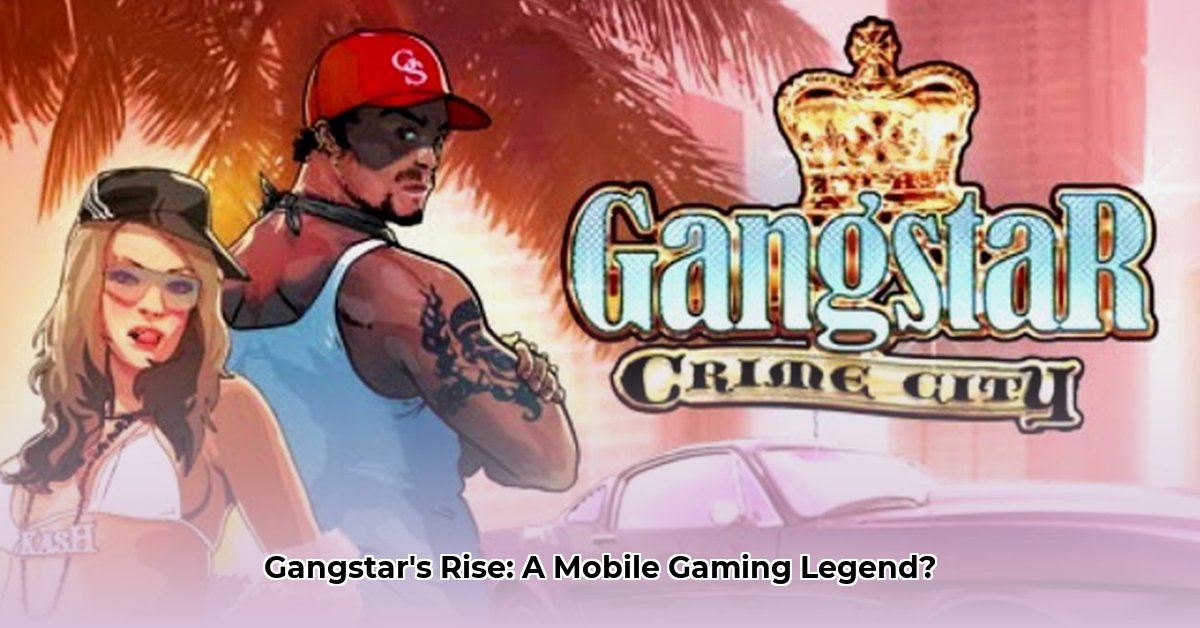
Gangstar Crime City: Humble Beginnings in a Pixelated World
Remember the early days of mobile gaming? Clunky controls, simple graphics, and limited storylines were the norm. In 2006, Gameloft dared to challenge these limitations with Gangstar: Crime City. While its graphics were rudimentary (think pixelated sprites and a top-down perspective, reminiscent of classic arcade games), its ambition was revolutionary. It offered a taste of open-world crime, a genre largely unexplored on mobile devices at the time. This groundbreaking release effectively laid the groundwork for the franchise's future evolution. Did you ever imagine playing a GTA-style game on your phone back then? It was a bold leap for the mobile gaming industry.
The game's world, though simple, was surprisingly engaging. Straightforward missions—car chases, shootouts, the standard gangster fare—provided a surprisingly addictive gameplay loop. The charm of Gangstar: Crime City lay in its simplicity and its pioneering spirit. It wasn't about realism; it was about fun, pure and simple open-world sandbox mayhem in your pocket. This early success paved the way for much more ambitious titles to come. What percentage of early mobile gamers do you think played Gangstar: Crime City?
Gangstar Vegas: A Quantum Leap in Open-World Mobile Gaming
Seven years later, the landscape of mobile gaming had dramatically changed. In 2013, Gangstar Vegas: World of Crime arrived, and it wasn't just an upgrade; it was a transformation. The pixelated sprites were gone, replaced by detailed 3D graphics. The top-down view made way for a dynamic third-person perspective, immersing players in a vibrant, sprawling world. It was like stepping from a black-and-white photograph into a vivid, high-definition movie. This significant leap in visual fidelity was a testament to the advancements in mobile technology.
Gameplay also evolved significantly. The simple missions of Crime City expanded into a diverse range of activities: high-speed car chases, intense boxing matches, and even the unexpected—zombie attacks! This bold inclusion of outlandish elements reflected a wider trend in open-world games at the time – seamlessly integrating surprising and engaging features to keep players on their toes. The addition of RPG elements like leveling up and unlocking new skills added depth, transforming the experience from a linear series of missions into a character-driven progression system. This increase in complexity likely contributed to significantly extended playtime.
Here's a quick comparison highlighting the dramatic evolution between the two titles:
| Feature | Gangstar: Crime City (2006) | Gangstar Vegas (2013) |
|---|---|---|
| Perspective | Top-down, 2D | Third-person 3D |
| Graphics | Simple, pixelated | Detailed, realistic |
| Gameplay | Basic missions: car chases, shootouts | Diverse missions: racing, boxing, zombie fights, RPG elements |
| Customization | Limited character and vehicle options | Extensive character and vehicle customization options |
| World Size | Relatively small, contained environment | Significantly larger, more open explorable world |
The core of the Gangstar experience remained—you're still a gangster causing chaos in a city—but Gangstar Vegas amplified those elements with compelling depth and enhanced features. The transformation from its predecessor was stark, and it reflects the astonishing growth of mobile gaming technology.
The Future of Gangstar: Innovation and Adaptation
The massive success of Gangstar Vegas set the stage for future installments. The path forward for Gameloft involves leveraging cutting-edge technology, refining gameplay mechanics, and importantly, listening to player feedback. Gameloft's leadership will need to be both reactive and proactive.
The integration of virtual reality (VR) or augmented reality (AR) elements could be a compelling evolutionary step, further enhancing immersion and interaction. Continued development focused on enhanced story arcs and compelling character-driven narratives are also keys to long-term success. How will Gameloft balance innovation with the core gameplay that made the franchise a success? This is precisely the challenge they face.
Different Perspectives on Gangstar's Future
Several key stakeholders influence the future trajectory of the Gangstar franchise:
| Stakeholder | Short-Term Goals (0-1 year) | Long-Term Goals (3-5 years) |
|---|---|---|
| Gameloft | Refine Gangstar Vegas based on player reviews; explore monetization strategies | Invest in VR/AR technology; diversify revenue streams; expand intellectual property |
| Players | Engage with updates; participate in online communities; share feedback | Expect enhanced gameplay, compelling storylines, and responsive developers |
| Competitors | Analyze Gameloft's strategies; create unique, competitive titles | Establish a strong niche in the open-world mobile gaming sector |
The journey from Gangstar: Crime City's pixelated streets to the sprawling metropolis of Gangstar Vegas demonstrates the remarkable evolution of mobile gaming. The franchise’s future hinges on Gameloft's ability to adapt to a dynamic market, innovate with new technologies, and constantly engage with its players. The future of the Gangstar franchise holds significant potential, and it will be fascinating to see where it goes next.
⭐⭐⭐⭐☆ (4.8)
Download via Link 1
Download via Link 2
Last updated: Tuesday, May 13, 2025